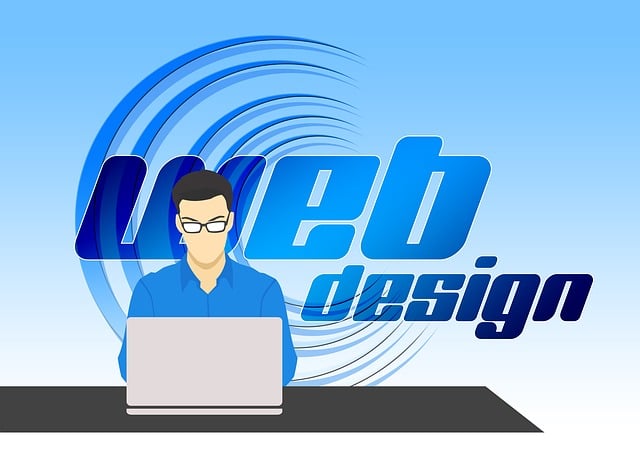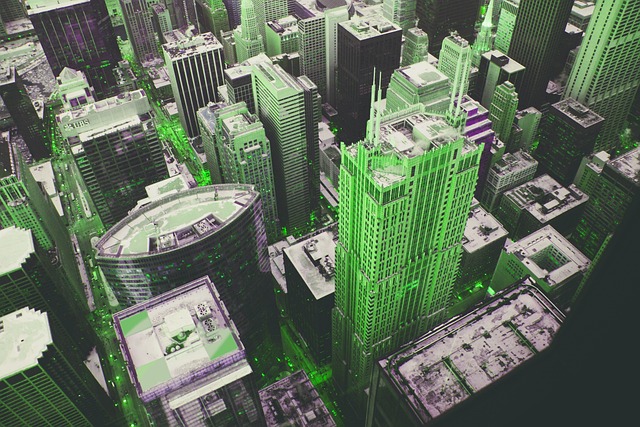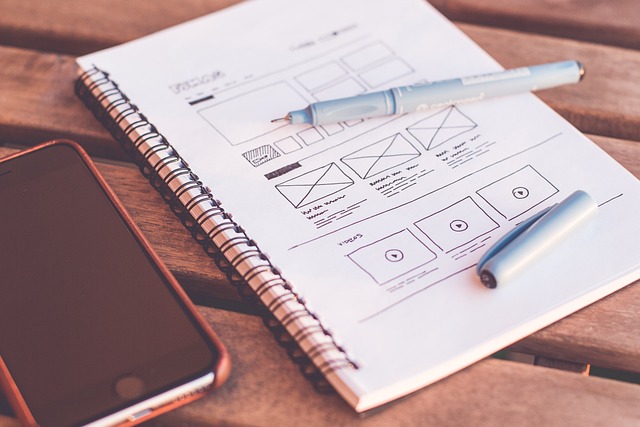In 2024, web design evolves with a focus on minimalism, micro-interactions, immersive tech (AR/3D), personalization, asymmetrical layouts, eco-friendly practices, voice user interfaces (VUI), and gender-neutral aesthetics. These trends enhance usability, engage users through interactive content, and cater to modern demands for accessible, captivating, and personalized digital experiences, while also promoting sustainability and inclusivity.
“Discover the evolving landscape of web design in 2024, where innovative trends redefine user experiences. From the minimalist revolution to micro-interactions and immersive AR, this article explores the hottest designs shaping online spaces. Learn how personalized interfaces, unconventional layouts, sustainability, VUI, gender-neutral aesthetics, and interactive content are capturing users’ attention. Stay ahead of the curve with these latest web design trends that promise to transform digital interactions.”
Minimalism Reimagined: Simplifying User Interfaces

In the ever-evolving landscape of web design, minimalism is making a powerful comeback in 2024, but with a twist—reimagined for modern user experiences. Gone are the days when minimalist designs were about bare essentials; instead, we’re seeing a refined approach that prioritizes simplicity while enhancing usability. This trend focuses on clean layouts, subtle visual hierarchies, and intelligent content placement to create interfaces that are not only aesthetically pleasing but also intuitive.
The latest web design trends embrace minimalism as a strategy to improve user engagement by reducing cognitive load. By stripping down complex designs to their essential elements, developers are making websites more accessible and faster to navigate. This simplicity doesn’t equate to lack of creativity; instead, it allows for bolder use of color, typography, and interactive elements to draw attention to key information, fostering a seamless and enjoyable user journey.
Micro-Interactions: Adding Subtle Animation for Enhanced User Experience

In the realm of the latest web design trends, micro-interactions are emerging as a powerful tool to elevate user experiences. These subtle animations, though tiny in scale, pack a significant punch by adding dynamism and feedback to user interfaces. Micro-interactions can range from a simple button press animation to more complex transitions, enhancing the overall interactivity of websites. By incorporating these minute details, web designers can create engaging and intuitive interfaces that keep users captivated.
For 2024, anticipate seeing micro-interactions as a prominent feature across various platforms. As users demand increasingly seamless digital experiences, developers are leveraging animations to provide instant visual cues and satisfaction. This trend not only improves usability but also fosters a sense of delight and surprise, encouraging users to explore and interact more. Embracing these latest web design trends can significantly differentiate a website in an ever-crowded online landscape.
The Rise of 3D and Augmented Reality (AR) Elements in Web Design

The year 2024 marks a significant shift in web design, with an increasing adoption of immersive technologies like 3D and Augmented Reality (AR). As one of the latest web design trends, these innovative elements are transforming digital experiences by offering interactive and visually captivating interfaces. Websites are no longer confined to two-dimensional layouts; instead, designers are leveraging 3D models, animations, and AR experiences to create engaging online environments.
This trend is particularly evident in e-commerce platforms, where brands are using AR to allow customers to visualize products in a more realistic way, enhancing the online shopping experience. Moreover, interactive 3D elements can elevate simple web pages, making them more dynamic and user-friendly. As technology advances, we can expect even more seamless integration of AR and VR (Virtual Reality) into web design, paving the way for truly immersive digital interactions in the coming years.
Personalization at Scale: Tailoring Digital Experiences

In 2024, personalization at scale is a key trend shaping the latest web design trends. With advancements in technology and data analytics, websites are now equipped to offer tailored digital experiences for each user. This means that visitors to your site will see content, products, or services specifically selected to match their interests, preferences, and even past behavior.
Personalization goes beyond simply showing different landing pages based on user location. It involves creating dynamic interfaces that adapt in real-time, offering personalized recommendations, and delivering a unique, engaging experience for every individual. This trend not only enhances user satisfaction but also boosts conversion rates, making it a must-have strategy for modern web design.
Unordered Layouts and Asymmetrical Designs: Breaking Traditional Rules

In the realm of web design, 2024 is set to embrace a shift from conventional layouts and symmetrical structures. Unordered layouts and asymmetrical designs are emerging as the latest web design trends, challenging the status quo and offering a fresh aesthetic appeal. This departure from traditional rules allows for more creative expression and better visual storytelling on websites. By breaking free from rigid symmetry, designers can now craft dynamic compositions that capture user attention and foster engaging experiences.
These innovative approaches to web aesthetics involve playful arrangements of elements, uneven spaces, and unexpected juxtapositions. Such designs not only break the monotony but also adapt seamlessly to various devices and screen sizes. As users increasingly demand visually captivating and intuitive online experiences, embracing these latest web design trends is crucial for creating websites that stand out in a crowded digital landscape.
Sustainable and Eco-Friendly Web Design Practices Gaining Momentum

As awareness of environmental issues continues to grow, sustainable and eco-friendly practices are making waves in the digital realm, including web design. The latest web design trends showcase a growing commitment to reducing the industry’s carbon footprint. Designers are opting for minimalist aesthetics, utilizing recycled materials, and prioritizing energy-efficient technologies. These efforts extend from the choice of color palettes—natural hues derived from plant-based sources—to the adoption of responsive design techniques that minimize data usage and enhance user experiences while lowering server loads.
This shift towards eco-conscious design isn’t just a trend; it’s a necessary step toward creating a more sustainable digital future. By embracing these practices, web designers not only contribute to environmental preservation but also foster trust among users who increasingly value brands aligned with their ecological beliefs. As consumers become more conscious of the impact of their online choices, adopting sustainable web design trends will likely become a competitive advantage for businesses aiming to appeal to modern audiences.
Voice User Interfaces (VUI): Optimizing for Conversational Searches

Voice User Interfaces (VUI) are set to make a significant impact in 2024, revolutionizing how users interact with websites. As conversational search becomes increasingly popular, designers need to optimize their sites for voice commands and natural language queries. This shift towards a more conversational experience requires a rethinking of traditional web design elements.
The latest web design trends incorporate VUIs by simplifying navigation and ensuring content is accessible through voice. Designers are focusing on creating interfaces that understand user intent, providing relevant results without requiring complex text input. By embracing these advancements, websites can become more inclusive and cater to a broader audience, staying ahead in the ever-evolving landscape of online interactions.
The Impact of Gender-Neutral Design and Its Aesthetic Appeal

The year 2024 marks a significant shift in web design with the increasing adoption of gender-neutral aesthetics. This trend goes beyond mere visual appeal; it’s a statement about inclusivity and breaking away from traditional, often binary design conventions. By removing gendered assumptions, designers can create websites that resonate with a broader audience, fostering an environment where everyone feels welcome and represented.
Visually, gender-neutral design leverages soft, organic colors, clean lines, and minimalism to craft spaces that are both calming and engaging. This aesthetic appeals to users seeking intuitive, uncluttered interfaces. It also opens up creative possibilities by allowing for more versatile branding and content presentation, making it a key element among the latest web design trends.
Interactive Content and Micro-Websites: Captivating Users with Scannable Media

In the realm of web design, 2024 promises exciting developments, with a strong emphasis on interactive content and micro-websites to captivate users. One of the latest web design trends is the integration of scannable media, such as videos, animated graphics, and interactive infographics, which make websites more engaging and accessible. Users today have shorter attention spans, so designers are focusing on creating content that offers quick, digestible information while still providing a rich user experience.
Micro-websites, a growing trend, are designed to deliver specific, focused content in a concise manner. These smaller, targeted sites cater to specific user needs and interests, making them easily scannable and shareable. By adopting these strategies, web designers aim to create dynamic digital experiences that keep users engaged and encourage exploration, aligning with the evolving preferences of modern internet users.
